Growing Watermelons in Small Spaces might seem like an impossible dream, conjuring images of sprawling vines taking over your entire yard. But guess what? I’m here to tell you that juicy, homegrown watermelons are absolutely within reach, even if you’re working with a balcony, patio, or tiny garden! For centuries, watermelons have been a symbol of summer, abundance, and sweet refreshment, enjoyed across cultures from ancient Egypt to modern-day picnics.
But let’s face it, traditional watermelon farming requires a lot of space, leaving many aspiring gardeners feeling left out. That’s where these clever DIY tricks and hacks come in. I’m going to show you how to maximize your limited space and cultivate delicious watermelons using vertical gardening techniques, container gardening secrets, and smart variety selection.
Imagine biting into a perfectly ripe, sun-warmed watermelon that you grew yourself, knowing you didn’t need acres of land to make it happen. This article is your guide to unlocking the secrets of growing watermelons in small spaces, empowering you to enjoy the taste of summer, no matter how limited your gardening area may be. So, grab your gardening gloves, and let’s get started!
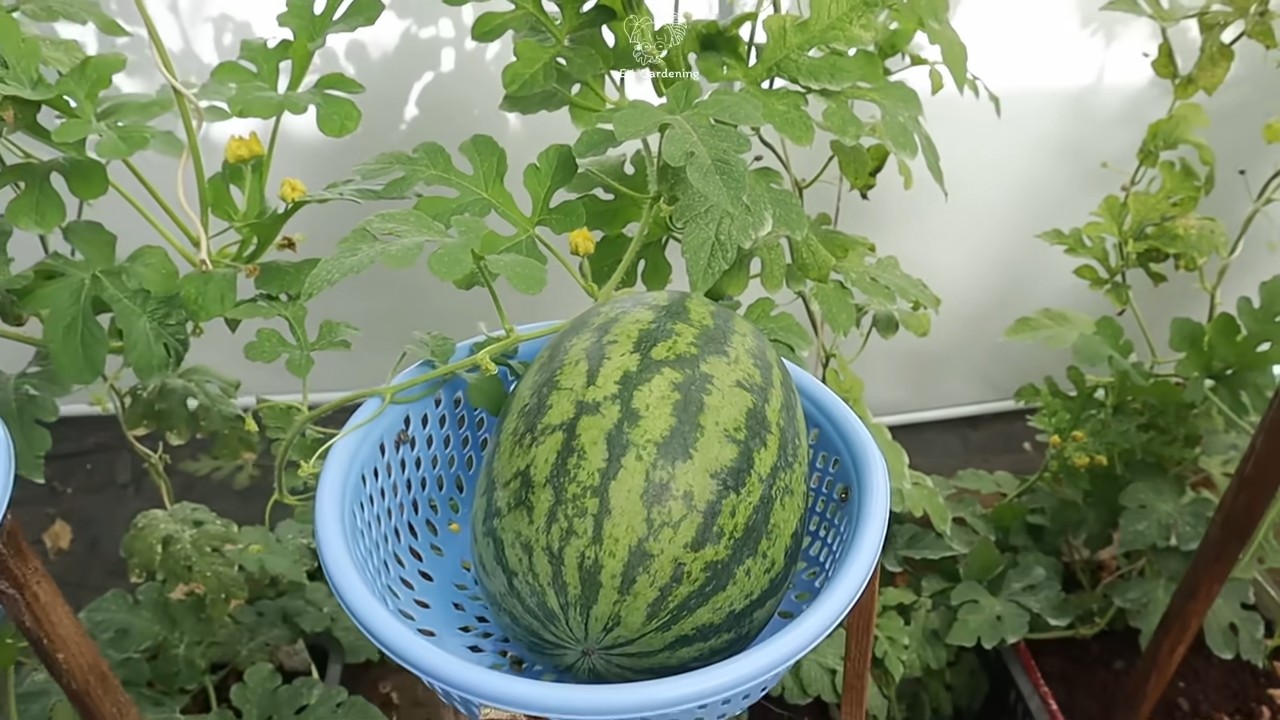
Growing Watermelons in Small Spaces: A DIY Guide
Hey there, fellow gardening enthusiasts! Dreaming of juicy, homegrown watermelons but think you don’t have the space? Think again! I’m here to tell you that even with a small balcony, patio, or tiny backyard, you can absolutely cultivate these summer delights. It’s all about choosing the right varieties, employing clever techniques, and giving your watermelons a little extra TLC. Let’s dive in!
Choosing the Right Watermelon Variety
The key to small-space watermelon success lies in selecting compact or bush varieties. These are bred to produce smaller vines and fruits, making them perfect for containers or limited garden beds. Here are a few of my favorites:
- Bush Sugar Baby: This is a classic choice for small spaces. It produces small, round watermelons (around 8-10 pounds) on compact vines. They mature quickly, usually in about 75-80 days.
- Sugar Baby: While not technically a “bush” variety, Sugar Baby is relatively compact compared to larger watermelons. It produces sweet, red-fleshed fruits weighing around 8-10 pounds.
- Golden Midget: This unique variety produces small, yellow-skinned watermelons with pink flesh. They’re super early maturing (around 70 days) and perfect for a quick harvest.
- Tiger Baby: Another compact option, Tiger Baby watermelons have distinctive striped skin and sweet, red flesh. They typically weigh around 6-8 pounds.
- Patio Baby: As the name suggests, this variety is specifically bred for container gardening. It produces small, personal-sized watermelons (around 6 pounds) on very compact vines.
When choosing your variety, consider your local climate and growing season. Look for varieties that are well-suited to your region and have a relatively short maturity time.
Preparing Your Growing Space
Whether you’re using containers or a small garden bed, proper preparation is crucial for watermelon success.
- Sunlight: Watermelons need at least 6-8 hours of direct sunlight per day. Choose a location that receives plenty of sunshine.
- Soil: Watermelons thrive in well-draining, fertile soil. If you’re using containers, use a high-quality potting mix. If you’re planting in a garden bed, amend the soil with compost or well-rotted manure to improve drainage and fertility.
- Container Size: If you’re growing watermelons in containers, choose a large container that is at least 24 inches in diameter and 18 inches deep. This will provide enough space for the roots to grow.
- Support: Even compact watermelon varieties can produce long vines. Provide a trellis or other support system to keep the vines off the ground and prevent the fruits from rotting.
Step-by-Step Planting Guide
Now for the fun part – planting your watermelon seeds or seedlings!
- Start Seeds Indoors (Optional): To get a head start on the growing season, you can start watermelon seeds indoors 4-6 weeks before the last expected frost. Sow the seeds in small pots or seed trays filled with seed-starting mix. Keep the soil moist and warm (around 80-85°F) until the seeds germinate.
- Prepare the Soil: Whether you’re planting in a container or a garden bed, make sure the soil is loose and well-draining. Amend the soil with compost or well-rotted manure to improve fertility.
- Plant the Seeds or Seedlings: If you’re planting seeds directly in the ground, sow them about 1 inch deep and 2-3 feet apart. If you’re transplanting seedlings, dig a hole that is slightly larger than the root ball. Gently remove the seedling from its pot and place it in the hole. Backfill with soil and water thoroughly.
- Water Regularly: Watermelons need consistent moisture, especially during hot weather. Water deeply and regularly, aiming to keep the soil consistently moist but not waterlogged.
- Mulch: Apply a layer of mulch around the plants to help retain moisture, suppress weeds, and regulate soil temperature. Straw, wood chips, or shredded bark are all good options.
Training and Pruning Your Watermelon Vines
Even compact watermelon varieties can produce long vines that can quickly take over a small space. Training and pruning can help keep the vines under control and encourage fruit production.
- Vertical Growing: Train the vines to grow up a trellis or other support system. This will save space and improve air circulation, which can help prevent diseases.
- Pruning: Prune away any suckers (small shoots that grow from the base of the plant) to encourage the plant to focus its energy on fruit production. You can also prune away any excess vines that are not producing fruit.
- Hand Pollination (If Needed): Watermelons have separate male and female flowers. If you’re not seeing a lot of bees or other pollinators in your garden, you may need to hand-pollinate the flowers. To do this, use a small paintbrush to transfer pollen from the male flowers to the female flowers. The female flowers have a small, immature watermelon at the base.
Fertilizing Your Watermelons
Watermelons are heavy feeders and need regular fertilization to produce healthy vines and sweet, juicy fruits.
- Start with a Balanced Fertilizer: When you first plant your watermelons, use a balanced fertilizer (such as 10-10-10) to promote healthy root and vine growth.
- Switch to a High-Potassium Fertilizer: Once the plants start to flower, switch to a fertilizer that is higher in potassium (such as 5-10-10). Potassium is essential for fruit development and sweetness.
- Fertilize Regularly: Fertilize your watermelons every 2-3 weeks throughout the growing season. Follow the instructions on the fertilizer label.
Watering Strategies for Optimal Growth
Consistent and proper watering is paramount for watermelon success, especially in small spaces where soil can dry out quickly.
- Deep Watering: Water deeply and less frequently, encouraging roots to grow deeper into the soil. This makes the plant more resilient to drought.
- Avoid Overhead Watering: Water at the base of the plant to avoid wetting the foliage, which can lead to fungal diseases.
- Monitor Soil Moisture: Check the soil moisture regularly by sticking your finger into the soil. If the top inch or two feels dry, it’s time to water.
- Watering During Fruiting: Increase watering frequency when the fruits start to develop. Watermelons need plenty of water to produce juicy, sweet fruits.
Pest and Disease Control
Watermelons can be susceptible to various pests and diseases. Here’s how to protect your plants:
- Common Pests: Aphids, squash bugs, and cucumber beetles are common watermelon pests. Inspect your plants regularly for signs of infestation.
- Organic Pest Control: Use organic pest control methods, such as insecticidal soap, neem oil, or diatomaceous earth, to control pests.
- Common Diseases: Powdery mildew, fusarium wilt, and anthracnose are common watermelon diseases.
- Disease Prevention: Prevent diseases by providing good air circulation, avoiding overhead watering, and using disease-resistant varieties.
- Fungicides: If your plants develop a disease, use a fungicide to control the spread. Choose a fungicide that is specifically labeled for use on watermelons.
Harvesting Your Watermelons
Knowing when to harvest your watermelons is crucial for enjoying their full flavor and sweetness.
- Days to Maturity: Check the seed packet or plant tag for the estimated days to maturity. This will give you a general idea of when to expect your watermelons to be ripe.
- Tendril Test: Look for the tendril closest to the watermelon stem. When this tendril turns brown and dries out, the watermelon is usually ripe.
- Ground Spot: The ground spot (the area where the watermelon rests on the ground) should turn from white to yellow or cream.
- Thumping Test: Give the watermelon a gentle thump. A ripe watermelon will sound hollow.
- Harvest Carefully: Use a sharp knife to cut the watermelon from the vine, leaving a few inches of stem attached.
Enjoying Your Homegrown Watermelons
Congratulations! You’ve successfully grown watermelons in a small space. Now it’s time to enjoy the fruits of your labor.
- Chill Before Serving: Chill your watermelons in the refrigerator for a few hours before serving. This will enhance their sweetness and flavor.
- Cut
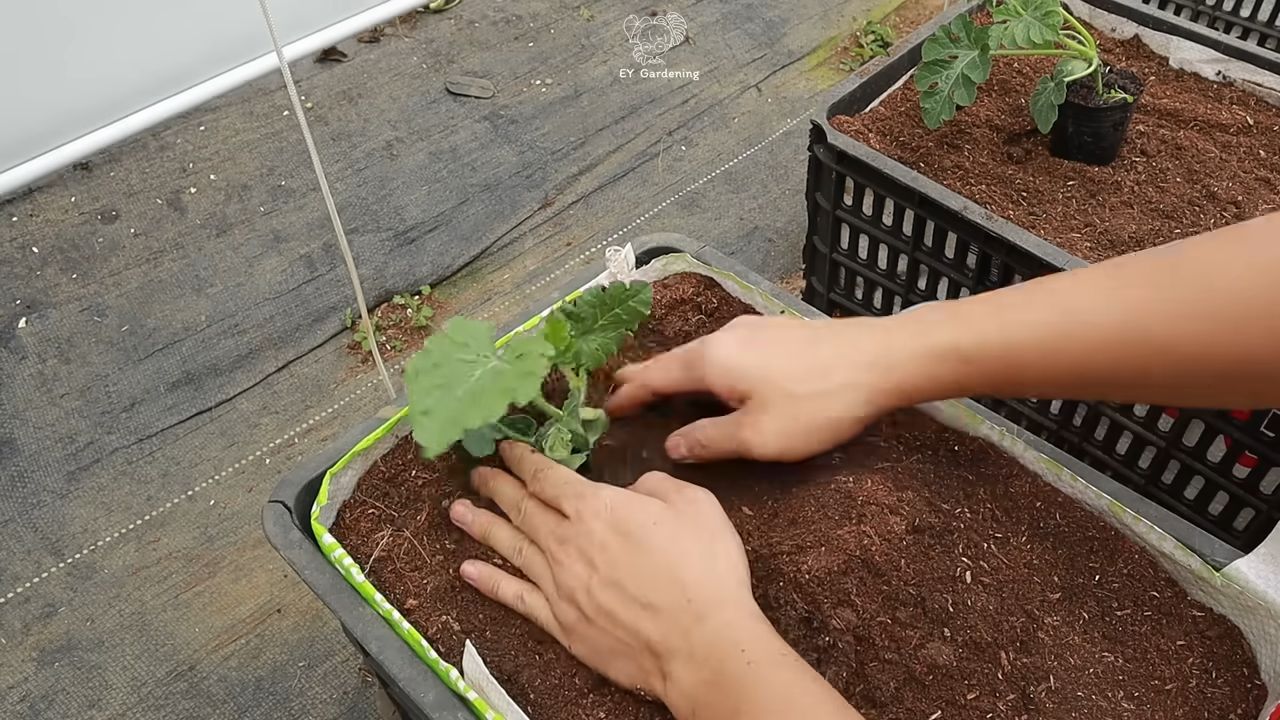
Conclusion
So, there you have it! Growing watermelons in small spaces might seem like an impossible feat, but with a little ingenuity and the right techniques, you can absolutely enjoy the sweet taste of homegrown watermelon, even if you’re limited to a balcony, patio, or small garden plot. This DIY approach isn’t just about saving space; it’s about maximizing your yield, connecting with nature, and experiencing the immense satisfaction of nurturing a plant from seed to delicious fruit.
Why is this a must-try? Because it empowers you to overcome spatial limitations and cultivate your own food. Imagine the pride of serving a slice of watermelon you grew yourself, knowing you defied the odds and created something amazing in a small area. Plus, it’s a fantastic learning experience, teaching you about plant care, vertical gardening, and the resilience of nature.
Don’t be afraid to experiment with different watermelon varieties. Bush varieties are naturally more compact and well-suited for container gardening. Consider trying ‘Sugar Baby’ or ‘Bush Sugar Baby’ for smaller fruits that mature quickly. You can also explore different trellising methods. While a sturdy A-frame trellis is a great option, you could also use a tomato cage for smaller varieties or even hang the watermelons in slings made from old t-shirts or pantyhose to provide extra support as they grow.
Another variation to consider is companion planting. Marigolds can help deter pests, while basil can improve the flavor of your watermelons. Planting these alongside your watermelon can create a healthier and more productive growing environment.
Remember to be patient and attentive to your watermelon plants. They need consistent watering, plenty of sunlight, and regular fertilization. Keep an eye out for pests and diseases, and address any issues promptly.
We wholeheartedly encourage you to give this DIY watermelon growing trick a try. It’s a rewarding and fulfilling experience that will transform your small space into a miniature oasis. And most importantly, don’t forget to share your journey with us! We’d love to see your progress, hear about your successes (and challenges!), and learn from your experiences. Post pictures of your watermelon plants, share your tips and tricks, and let us know what worked best for you. Together, we can create a community of small-space watermelon growers and inspire others to embrace the joy of homegrown food. This method of growing watermelons small spaces is not just a trend; it’s a sustainable and fulfilling way to enjoy fresh produce, regardless of your living situation. So, grab your seeds, prepare your containers, and get ready to embark on a delicious adventure!
Frequently Asked Questions (FAQ)
What is the best type of container to use for growing watermelons in small spaces?
The ideal container should be at least 20 gallons in size to accommodate the watermelon’s extensive root system. Choose a container made from durable materials like plastic, resin, or terracotta. Ensure the container has adequate drainage holes to prevent waterlogging, which can lead to root rot. Fabric pots are also a great option as they allow for excellent aeration and drainage. Remember that darker colored containers will absorb more heat, which can be beneficial in cooler climates but detrimental in hotter ones.
How often should I water my watermelon plants in containers?
Watermelon plants are heavy drinkers, especially when they are fruiting. Water deeply and regularly, aiming to keep the soil consistently moist but not waterlogged. The frequency of watering will depend on the weather conditions, the size of your container, and the type of soil you’re using. In hot, sunny weather, you may need to water daily, or even twice a day. Check the soil moisture by sticking your finger about an inch deep into the soil. If it feels dry, it’s time to water. Consider using a self-watering container or adding a layer of mulch to help retain moisture.
What kind of fertilizer should I use for watermelons?
Watermelons are heavy feeders and require a balanced fertilizer to thrive. Start with a fertilizer that is high in nitrogen during the early stages of growth to promote leafy growth. Once the plant starts to flower, switch to a fertilizer that is higher in phosphorus and potassium to encourage fruit development. A fertilizer with an NPK ratio of 10-10-10 or 10-15-10 is a good starting point. You can also supplement with organic fertilizers like compost tea or fish emulsion. Fertilize every 2-3 weeks, following the instructions on the fertilizer package. Avoid over-fertilizing, as this can lead to excessive foliage growth at the expense of fruit production.
How do I trellis a watermelon plant in a small space?
Trellising is essential for growing watermelons in small spaces, as it allows the vines to grow vertically and saves valuable ground space. There are several trellising options available, including A-frame trellises, tomato cages, and even hanging slings. Choose a trellis that is sturdy enough to support the weight of the mature watermelons. As the vines grow, gently train them to climb the trellis, using plant ties or twine to secure them. For larger watermelon varieties, you may need to provide additional support for the fruits as they develop. This can be done by creating slings from old t-shirts or pantyhose and attaching them to the trellis.
How do I know when my watermelon is ripe?
Determining when a watermelon is ripe can be tricky, but there are several indicators to look for. First, check the tendril closest to the watermelon stem. When this tendril turns brown and dries out, it’s a good sign that the watermelon is nearing ripeness. Second, look at the spot where the watermelon rests on the ground. This spot, known as the ground spot, should turn from white to a creamy yellow color. Finally, give the watermelon a gentle thump. A ripe watermelon will sound hollow and deep. If it sounds dull or flat, it’s not quite ready. Remember that different watermelon varieties may have slightly different ripening characteristics, so it’s always a good idea to research the specific variety you’re growing.
What are some common pests and diseases that affect watermelons, and how can I prevent them?
Watermelons are susceptible to several pests and diseases, including aphids, squash bugs, vine borers, powdery mildew, and fusarium wilt. To prevent these problems, start by choosing disease-resistant watermelon varieties. Practice good garden hygiene by removing any dead or diseased plant material. Water at the base of the plants to avoid wetting the foliage, which can promote fungal diseases. Use insecticidal soap or neem oil to control aphids and squash bugs. Wrap the base of the watermelon stems with aluminum foil to deter vine borers. Ensure good air circulation around the plants to prevent powdery mildew. If you suspect fusarium wilt, remove the affected plants immediately and avoid planting watermelons in the same spot for several years.
Can I grow watermelons indoors?
While it’s possible to grow watermelons indoors, it can be challenging. Watermelons require a lot of sunlight, so you’ll need to provide supplemental lighting with grow lights. You’ll also need to hand-pollinate the flowers, as there won’t be any bees or other pollinators indoors. Additionally, you’ll need a very large container and a sturdy trellis to support the watermelon vines. If you’re up for the challenge, choose a compact watermelon variety and provide the plants with the best possible growing conditions. However, for most gardeners, growing watermelons outdoors in a small space is a more practical and rewarding option.

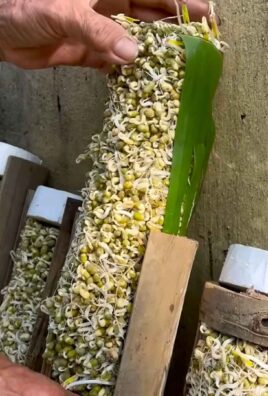
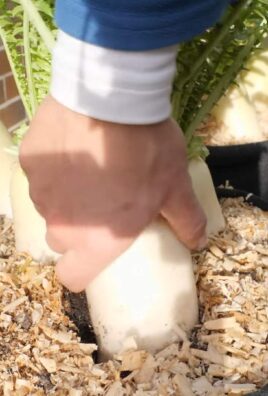
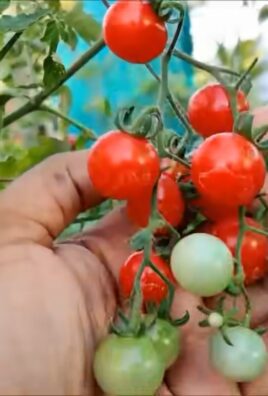
Leave a Comment